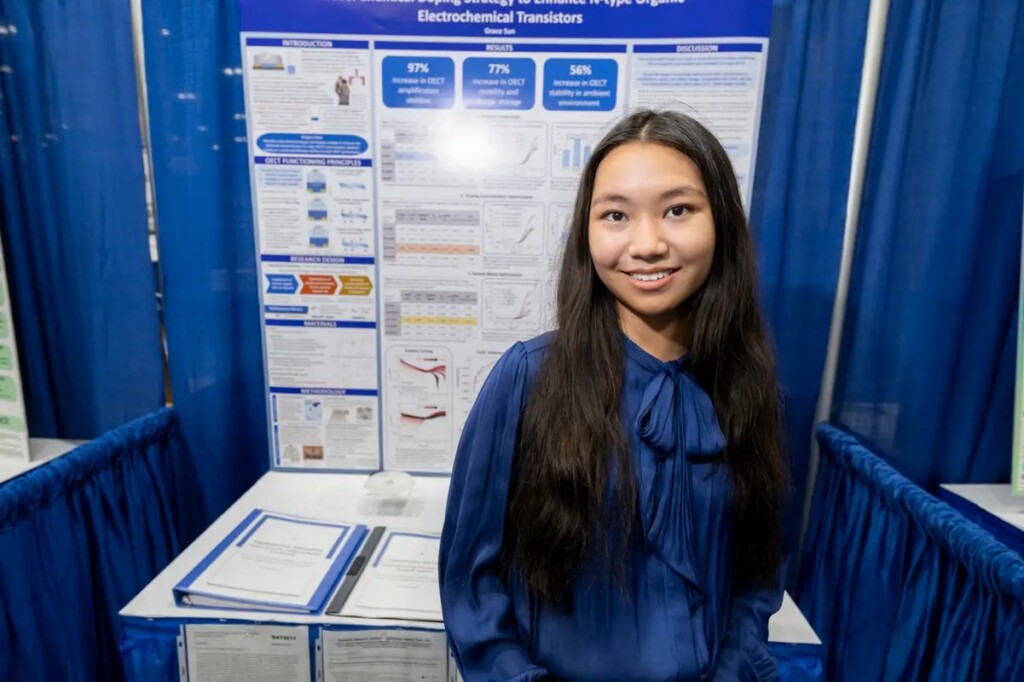
Grace Sun, credit – Society for ScienceFirst prize in the USA’s largest and most prestigious science fair has gone to a 16-year-old girl who found new ways to optimize the components of biomedical implants, promising a future of safer, faster, and longer-lasting versions of these critical devices.It’s not the work of science fiction; bioelectronic implants like the pacemaker have been around for decades, but also suffer from compatibility issues interfacing with the human body.On Friday, Grace Sun from Lexington, Kentukcy, pocketed $75,000 and was recognized among 2,000 of the nation and the world’s top STEM students as having produced the “number one project.”The award was given through the Society for Science’s Regeneron International Science and Engineering Fair, one of the largest and most prestigious in the world.Sun’s work focused on improving the capabilities of organic electrochemical transistors or OECTs, which like other devices made of silicon, are soft, flexible, and present the possibility of more complex implants for use in the brain or the heart.“They have performance issues right now,” Sun told Business Insider of the devices. “They have instability in the body. You don’t want some sort of implanted bioelectronic to degrade in your body.”Sensitive OECTs could detect proteins or nucleic acids in sweat, blood, or other...



_11126.jpg)